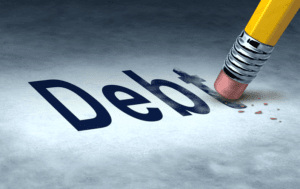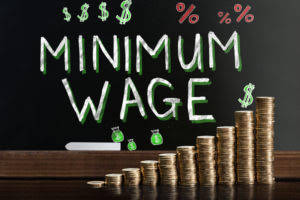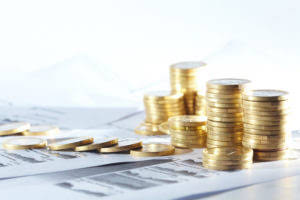
Investors with a longer time horizon can focus on buying stock in companies that are growing quickly but currently pay lower-than-average dividends. This won’t yield as much income in the short term, but as a firm grows and its business matures, the dividend yield should rise gradually. Getting in early means investors can buy more shares and eventually earn more dividends. The cheaper “cost-on-yield” makes this a better long-term investment strategy.
The bottom line on top dividend stocks
- How these factors may affect an individual investor’s decisions will depend on that person’s investing objectives.
- Ask a question about your financial situation providing as much detail as possible.
- Yield is expressed as a percentage, and it lets you know what return on investment you’re making when you earn a dividend from a given company.
- At the same time as the dividend is declared, the business will have decided on the date the dividend will be paid, the dividend payment date.
- So not only would you be paying a more significant fee, but your portfolio would also underperform by 1.3%.
- Share price declines like this can easily wipe out the money you earned from the dividend—or more.
- When a company earns profits, the board of directors has the discretion to decide whether to distribute those earnings to shareholders in the form of dividends.
These include constant, residual, and stable dividend policies, based on different theories. For accounting purposes, dividends are a reduction in the retained earnings or profits of a company. Many dividend checking accounts require that you make a certain minimal initial deposit to open the account. In addition, you may need to keep a minimum average monthly balance in order to earn interest and avoid fees. If your balance falls below the required threshold, you may earn a reduced interest rate or no interest and/or get hit with monthly service fees.

Declared Dividends

Conversely, companies with high payout ratios may have difficulty maintaining dividend payments, especially if an unforeseen event happens. Dividends are also presented in the financial statements of a company. First of all, the dividends payable balance created due to the declaration of dividends will be a part of the company’s Statement of Financial Position as a current liability.
Dividend declaration date
- On a basic level, each dividend you reinvest entitles you to more dividend payments in the future, which can supercharge your investment returns.
- For example, more than 84% of companies in the S&P 500 currently pay dividends.
- Before dividends are paid they should be recorded in the dividends payable account.
- Unlike savings accounts, checking accounts are designed for everyday money management and generally don’t pay interest on the money sitting in the account.
- However, the statement of cash flows will not show the $250,000 dividend as it has not been paid yet; hence no cash is involved here yet.
How a stock dividend affects the balance sheet is a bit more involved than a cash dividend, although it only involves shareholder equity. When a stock dividend is declared, the amount to be debited is calculated by multiplying the current stock price by shares outstanding by the dividend percentage. The dividend payout ratio is one way to assess the strength of a company’s dividends. The calculation for a payout ratio is to divide dividend by net income and then multiply the sum by 100. When the payout ratio is lower, it is preferable as the company will be disbursing less of its net income to shareholder dividend payments. Further, as the business is paying out less, the firm and the payments are more sustainable.
For every share of stock an investor owns, they get paid an amount of the company’s profits. Share price declines like this can easily wipe out the money you earned from the dividend—or more. It’s calculated by dividing the annual dividend per share by the stock’s price, which provides a percentage indicating your annual return on investment from dividends. Dividend income is a bit like earning interest from a bank in exchange for holding your money in a savings account. If you own one share of stock that’s valued at $100, a 5% annual dividend yield means the company will pay you $5 each year in dividend income. On the declaration date, the company also indicates a date, known as the record date, on which you must be a shareholder in the company to receive the declared dividend payment.

Dividends in Accounting
It is because dividends, as mentioned above, are a decrease in the retained earnings of a company. Similarly, the company must also create a liability for the amount of the declared dividend. For example, if a company declares dividends of $10,000, the accounting treatment will be as follows.
Dividends can be a lucrative source of passive income for savvy investors.
• You must have held the stock for more than 60 days in the 121-day period that begins 60 days before the ex-dividend date. Dividends are always considered taxable income by the Internal Revenue Service (IRS), regardless of the form in which they are paid. Mailed checks should be received within a few days of the what is a dividend account payment date. Once a dividend is announced on the declaration date, the company has a legal responsibility to pay it. Volatility profiles based on trailing-three-year calculations of the standard deviation of service investment returns. These companies have increased their dividends every year for 50+ years.

Stock Dividend: What It Is and How It Works, With Example

Lastly, York Water hasn’t been shy about making acquisitions to expand its reach. A steady diet of earnings-accretive bolt-on acquisitions ensures that York can maintain its continuous dividend streak. Regardless of whether you own or rent, you’re going to need these services.
In February, it increased its quarterly dividend for the 62nd consecutive year. Furthermore, the company has paid a continuous dividend, without interruption, since 1920. As noted earlier, young, growth-oriented companies may have a zero, https://www.bookstime.com/articles/normal-balance or very low payout ratio, while more established companies will often have higher payout ratios. There are also differences between industries and sectors, so this ratio is most useful when comparing companies within a specific industry.